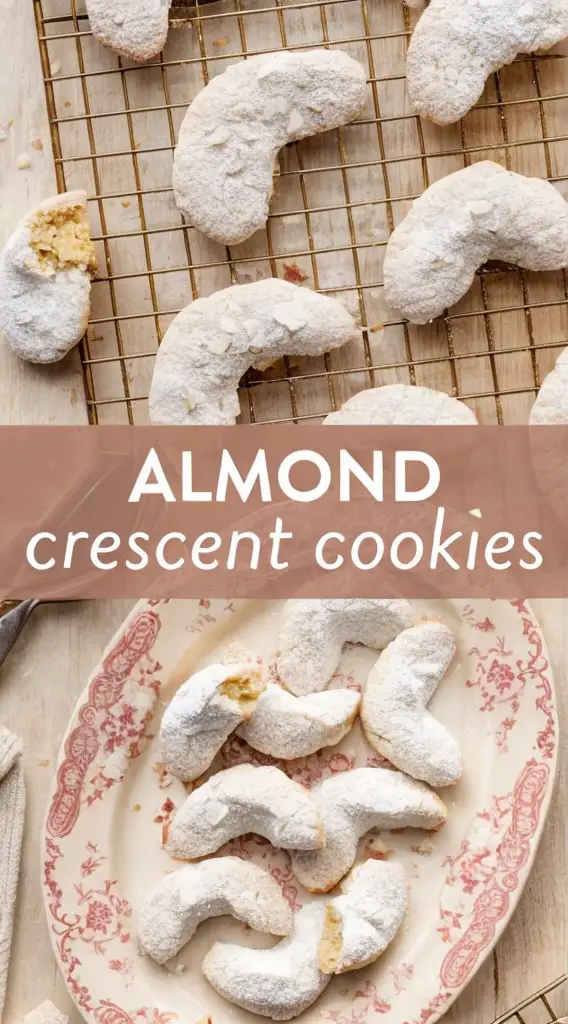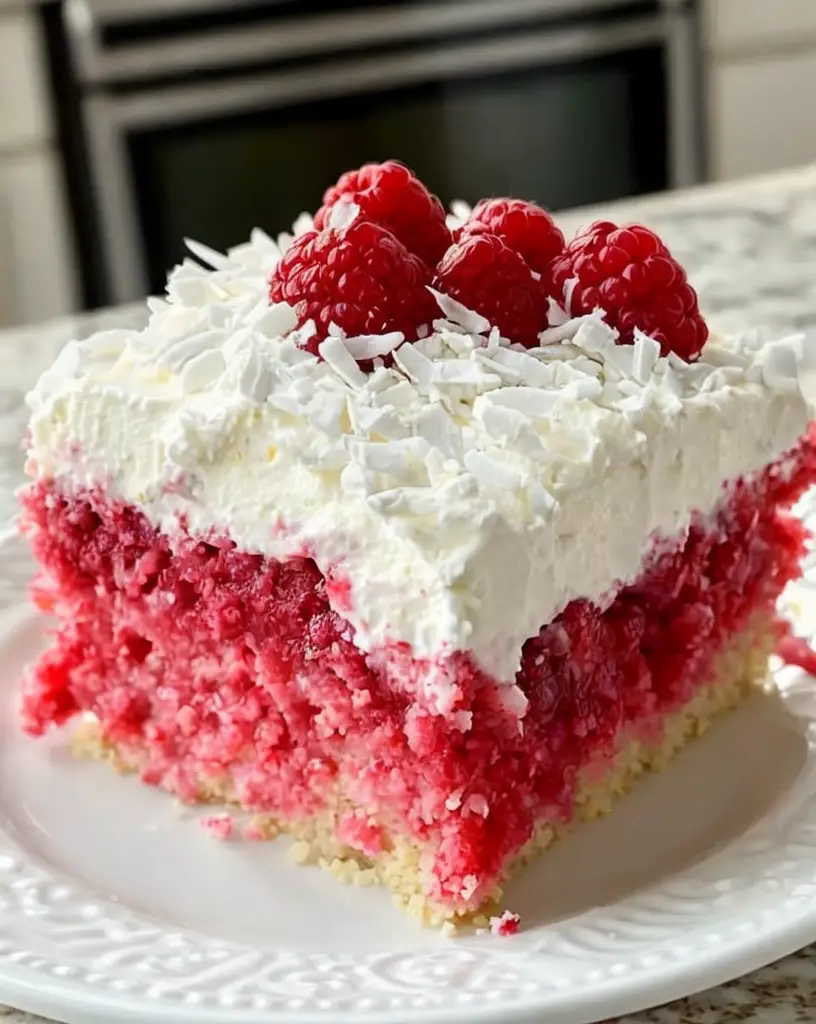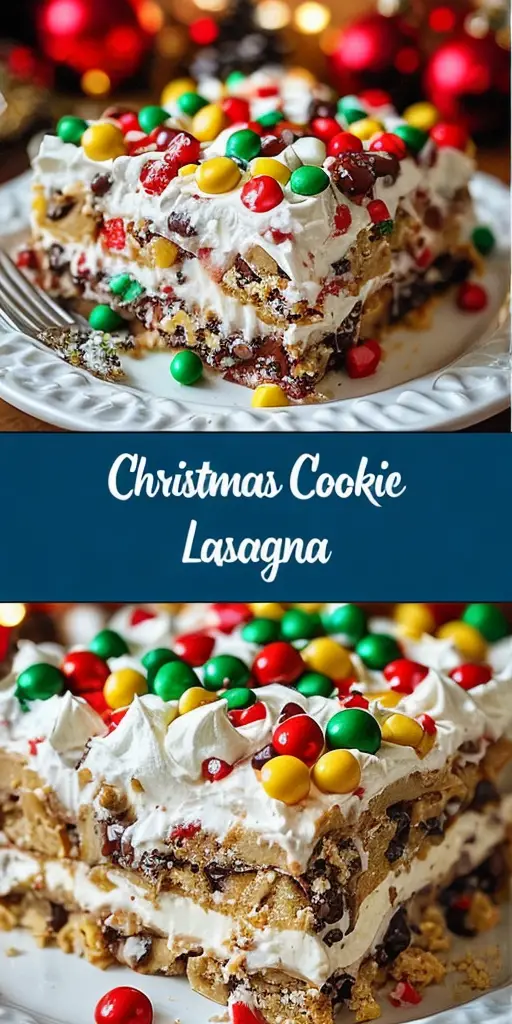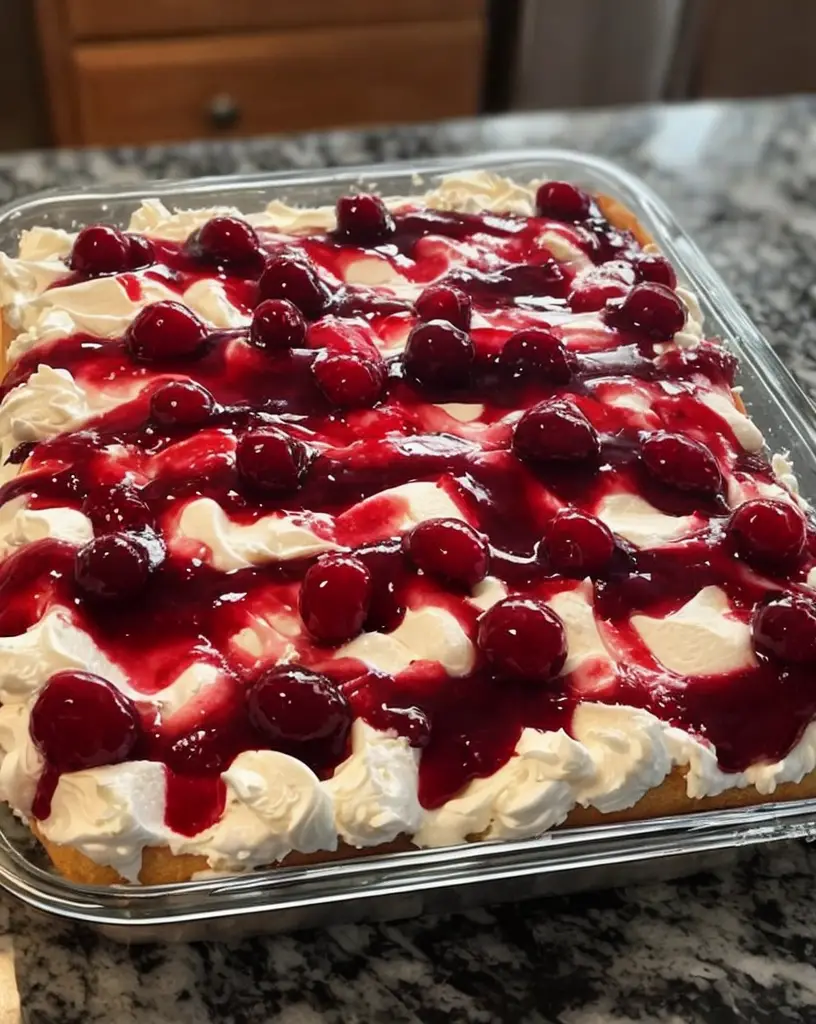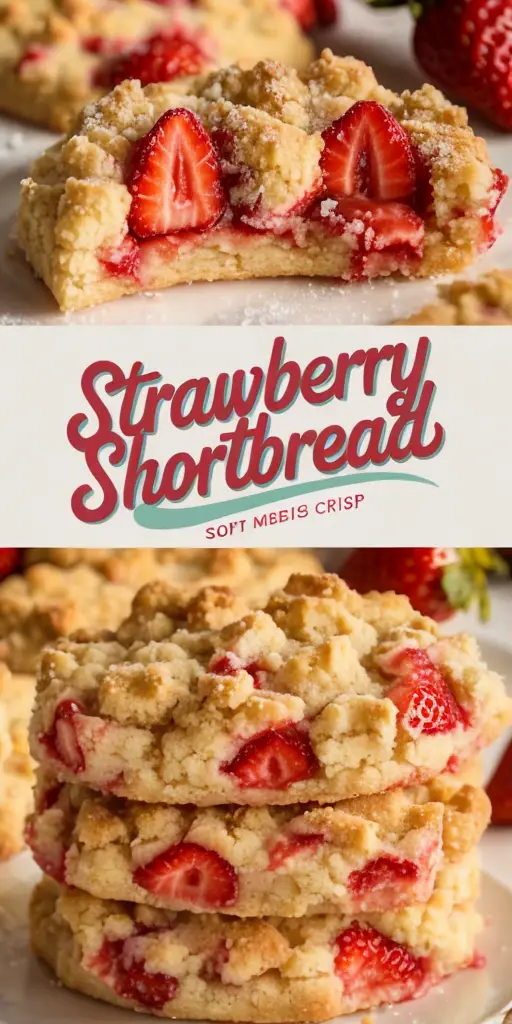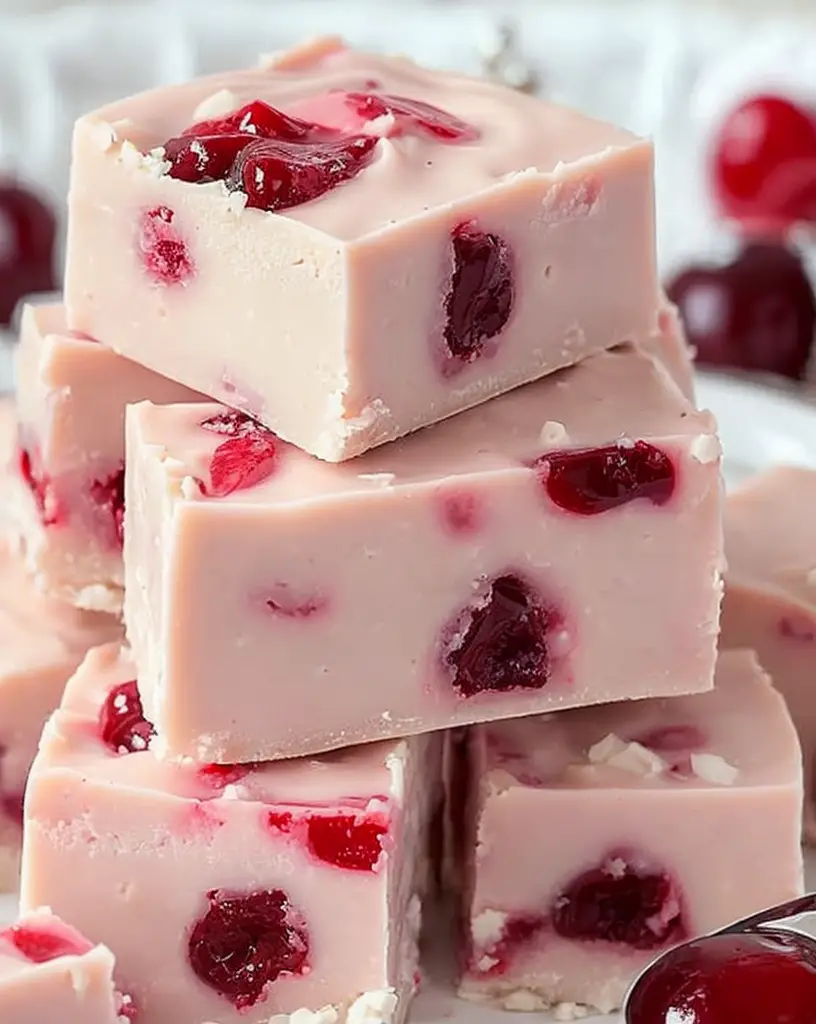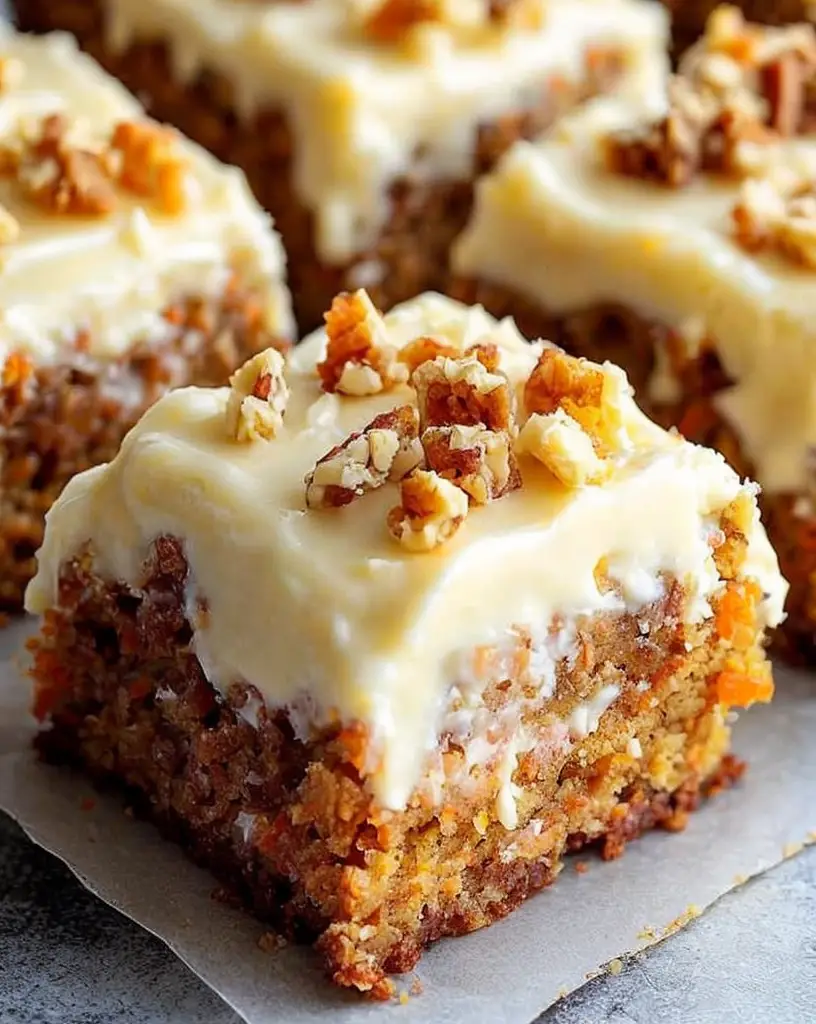Almond Crescent Cookies: A Delicious Nutty Delight
Almond Crescent Cookies are a delightful confection that effortlessly blend the gentle nuttiness of almonds with a rich buttery base. Perfect for any occasion, these crescent-shaped treats are dusted with powdered sugar, adding a touch of sweetness that enhances their sophisticated flavor profile. Almond Crescent Cookies bring forth the essence of homemade goodness, offering a crumbly texture that melts in your mouth, making them a favorite among cookie enthusiasts.
Quick Recipe Highlights
- Flavor Profile: Almond Crescent Cookies boast a delicate almond flavor complemented by a subtle buttery base.
- Texture: These cookies feature a soft, crumbly texture that melts effortlessly on the palate.
- Aroma: The enticing aroma of toasted almonds fills the kitchen as these cookies bake to perfection.
- Visual Appeal: Shaped as perfect crescents and adorned with dusted powdered sugar, they present a charming classic look.
- Skill Level Needed: Suitable for beginners, as the recipe requires basic mixing and shaping techniques.
- Special Equipment: A baking sheet, mixing bowl, and a fine sieve for dusting powdered sugar.
Recipe Overview
- Difficulty Level: Easy—the recipe requires basic kitchen skills and simple instructions, perfect for bakers of all levels.
- Category: Dessert—these cookies are ideal for after-dinner treats, festive cookie platters, or tea-time indulgence.
- Cuisine: Rooted in European baking traditions, these cookies have become a worldwide favorite due to their universal appeal.
- Cost: Affordable—the ingredients are basics available in most kitchens, with almonds being the only specialty item.
- Season: Perfect year-round but especially popular during the holiday season for their traditional charm.
- Occasion: Ideal for family gatherings, parties, or as a sweet homemade gift for friends and loved ones.
Why You’ll Love This Recipe
Almond Crescent Cookies combine taste and texture that are hard to resist. The blend of finely ground almonds and silky butter results in a cookie that offers a luxurious melt-in-your-mouth experience. This recipe is also exceptionally convenient, requiring minimal prep and cook time, allowing you to enjoy freshly baked cookies in just half an hour. Moreover, these cookies provide a nutritional edge over some other treats, thanks to the healthy fats and protein from the almonds.
These cookies are also fantastic at social gatherings. Their charming appearance garnished with powdered sugar makes them a standout, while their nutty flavor appeals to a wide array of palates, ensuring that they are a hit at any party. Also, almond cookies are cost-effective, requiring simple ingredients yet yielding a sophisticated baked good that won’t break the bank. Accessibility is a key advantage, with all required ingredients readily available in local grocery stores and baking sections.
Historical Background and Cultural Significance
Almond Crescent Cookies have a storied past with roots in European baking tradition, particularly in countries like Austria and Germany. These countries are renowned for their rich heritage of cookie recipes passed down through generations, often associated with festive times such as Christmas. Over the years, the almond crescent cookie has evolved, with numerous regional variations developing across Europe and eventually making its way to other parts of the world.
The cultural importance of these cookies lies in their role during holiday festivities. In many households, baking these cookies is a tradition that brings families together, instilling a sense of nostalgia and shared history. As the cookies have traveled across borders, they’ve been adopted and adapted, finding new forms and additions, such as incorporating chocolate or various nut varieties.
Ingredient Deep Dive
Almonds are the key ingredient in Almond Crescent Cookies. They hold a profound cultural significance, being a staple in various global cuisines, from savory Middle Eastern dishes to sweet European desserts. Almonds are rich in nutrients, known for their high vitamin E content and heart-healthy fats. When selecting almonds, opt for raw and unsalted to have control over the flavor profile and salt content of your cookies.
Almonds should be stored in a cool, dry place, ideally in an airtight container to prevent them from going rancid. For a flavorful variation, you can substitute almonds with another nut, like pecans or hazelnuts, though this will alter the cookie’s distinctive flavor. Ensure any substituted nuts are similarly ground for consistency in dough texture.
Common Mistakes to Avoid
- Overmixing the dough can lead to tough cookies—mix just until the ingredients are combined.
- Not chilling the dough before shaping can cause cookies to spread too much; always allow at least 30 minutes in the fridge.
- Using whole, rather than ground almonds, will result in a coarse texture—ensure almonds are finely ground.
- Underbaking will prevent that ideal crumbly texture—cookies should be golden brown for the best results.
- Not dusting enough powdered sugar after cooling can lead to a bland appearance and taste.
- Baking at too high a temperature can burn the edges—maintain the suggested 350°F for even baking.
- Failing to rotate the baking sheet can result in unevenly baked cookies; midway through, switch positions.
- Using melted instead of softened butter can negatively impact texture; cream softened butter for best results.
Essential Techniques
Creaming butter and sugar is a core technique for these cookies. The effectiveness of this step ensures a light, airy dough, which contributes to the cookie’s desired crumbly texture. Properly cream these ingredients until they are light and fluffy. A common pitfall is under-creaming, which can be identified if the butter mixture looks grainy or lacks volume.
Dusting with powdered sugar is another important step. Use a fine sieve to achieve an even layer, imparting the perfect final touch to these cookies. This step should be done once the cookies have cooled completely, directly enhancing both the visual appeal and flavor.
Pro Tips for Perfect Almond Crescent Cookies
To prevent spreading, chill the dough both before and after shaping it into crescents. This will help maintain a uniform shape during baking.
Finely grind almonds to ensure a smooth dough and consistent texture in the finished cookie. Using a food processor yields the best results.
For a richer flavor, toast the almonds lightly before grinding, which brings out their natural oils and enhances the cookie’s taste profile.
Use real vanilla extract rather than artificial for an authentic flavor that complements the almond taste beautifully.
While shaping the cookies, be gentle and consistent to ensure uniform size and even baking across the batch.
Experiment with adding a hint of citrus zest to the dough to offer a refreshing twist without overpowering the traditional almond flavor.
Store baked cookies in a tin lined with parchment paper to keep them fresh longer, retaining their perfect texture over several days.
Variations and Adaptations
Regional variations of Almond Crescent Cookies abound, such as adding crushed pistachios for a vibrant green hue and a subtle, distinctive flavor. For a seasonal adaptation, consider incorporating spices like cardamom or cinnamon, which pair beautifully with the nutty profile of the cookies and offer a warming touch during colder months.
For those with dietary restrictions, almond flour can replace all-purpose flour to make the cookies gluten-free. Adjustments might be necessary for binding, like adding an extra egg yolk. For a dairy-free version, substitute regular butter with plant-based alternatives that retain a rich flavor and texture.
If you’re inclined toward flavor modifications, try dipping half the crescent in melted dark chocolate and then rolling in crushed nuts for a decadent variation. You can also experiment with texture by incorporating finely chopped dried fruit like cranberries, which add bursts of flavor and color.
Serving and Presentation Guide
When serving Almond Crescent Cookies, consider elegant plating options that highlight their crescent shape. Arrange them on a decorative platter with varying layers to create depth. Garnishing with an additional sprinkle of powdered sugar just before serving adds a fresh, visually appealing dusting.
A traditional accompaniment for these cookies is a warm beverage, such as freshly brewed coffee or a selection of herbal teas, which complements their rich nutty flavor. For modern serving suggestions, pair with fruit compotes for a touch of acidity and natural sweetness that elevates the overall experience.
Mind the temperature—these cookies are best served at room temperature to ensure the perfect texture. Plan portions based on the occasion; for events where multiple desserts are offered, allocate 2-3 per guest to enjoy a balanced selection.
Wine and Beverage Pairing
Consider pairing Almond Crescent Cookies with a dessert wine like a late-harvest Riesling or a Moscato. These wines offer complementary sweetness without overpowering the cookies’ delicate flavors. For non-alcoholic alternatives, serve with almond or vanilla-infused milk chilled or warm.
Tea lovers will find that a robust black tea or a fragrant Earl Grey wonderfully complements the cookies, balancing out their nuttiness. When matching with beverages, consider serving suggestions like chilled glasses or warm mugs, depending on the setting, to enhance the experience further.
Storage and Shelf Life
Store Almond Crescent Cookies in an airtight container at room temperature for up to a week. For longer storage, place cookies in an airtight plastic bag, expelling excess air before sealing, and freeze for up to three months.
Avoid moisture exposure, which can ruin texture and spread moisture throughout the cookies. If signs of spoilage such as an off smell or change in texture appear, do not consume. Reheat previously frozen cookies by letting them come to room temperature before serving, avoiding microwaves to prevent a change in texture.
Make Ahead Strategies
To make ahead, prepare the dough up to two days in advance and store in the fridge, tightly covered until ready for baking. Stage your preparation by mixing dry and wet ingredients separately beforehand.
Monitor quality impact closely by ensuring cookies are freshly baked rather than pre-baked, which might affect their delightful texture. When reheating, prefer oven warming at low temperatures to maintain quality, and ensure garnishes are added fresh to maintain their visual and flavor qualities.
Scaling Instructions
When adjusting the Almond Crescent Cookies recipe for larger groups, scale up by double or triple the ingredients. Be cautious with the mixing process to retain the ideal texture, and use multiple baking sheets to prevent overcrowding in the oven.
For halving the recipe, ensure ingredient measurements are precise to avoid imbalance, and use a smaller mixing bowl for efficiency. Remember to adjust baking times slightly, checking for doneness by monitoring the color and texture of cookies.
Nutritional Deep Dive
Almond Crescent Cookies have a macro breakdown that highlights fats and carbohydrates primarily. Almonds contribute heart-healthy fats and protein, providing a rich source of vitamin E and magnesium, vital for various cellular functions.
Monitor portion sizes to maintain dietary balance, noting that a single cookie serves as a satisfying indulgence. Depending on your intake, adjust other meal components to accommodate the occasional treat without disrupting dietary goals.
Dietary Adaptations
For a gluten-free adaptation, substitute all-purpose flour with a 1:1 gluten-free baking flour and monitor the texture during mixing for any necessary adjustments.
To make these cookies dairy-free, opt for plant-based butter alternatives, which offer comparable results in texture and flavor.
For a vegan version, replace butter with vegan margarine and use a flaxseed meal and water mixture as a substitute for eggs to retain the binding attributes required for baking.
Troubleshooting Guide
If your cookies exhibit texture issues, such as being too tough, double-check the creaming step and ensure baking time is not exceeded.
To balance flavor, a pinch more salt can enhance and elevate the sweet almond profile without overpowering the taste.
Temperature problems, like cookies flattening, often indicate either an overly warm dough or incorrect oven setting—adopt oven thermometers for precise regulation and always chill the dough appropriately.
For ingredient substitutions, ensure consistency by choosing alternatives with similar fat and moisture content, vital for baking success. Timing concerns can be managed by careful monitoring with an additional baking test.
Recipe Success Stories
Our readers have shared delightful success stories involving Almond Crescent Cookies, consistently praising their texture and timeless flavor. One shared a variation incorporating finely chopped apricots, bringing a sweet tang counterpoint to the almond flavor, which became a family favorite for holiday gatherings.
Many home bakers find crowd-pleasing appeal in these cookies, with adaptations in flavorings like swapping vanilla for almond extract imparting a more pronounced nutty taste. Readers often express gratitude for the ease and simplicity of this recipe, making it a go-to addition to festive cookie trays.
Frequently Asked Questions
Ensure the dough is properly chilled before baking. This helps the fat in the cookies stay solid a bit longer, preventing spreading.
Can I substitute almond extract for vanilla extract?
Yes, almond extract can enhance the nutty flavor but use it sparingly as its flavor can be quite intense compared to vanilla.
Is it necessary to use blanched almonds?
While blanched almonds offer a finer grind and smoother texture, skin-on almonds can be used as well, though it may result in a slightly coarser cookie.
What’s the best way to grind almonds?
A food processor is ideal for creating finely ground almonds, ensuring the nuts are processed evenly without turning into almond butter.
Can I freeze the cookie dough?
Yes, shape the dough into crescents and freeze on a baking sheet. Once solid, transfer them to a bag or container until ready to bake.
How can I adapt this recipe for keto diets?
Use almond flour instead of all-purpose flour and a low-carb sweetener in lieu of powdered sugar to reduce carbohydrate content.
What if I don’t have a sieve for dusting sugar?
A fine mesh strainer works well as an alternative, providing even coverage of sugar across the cookies.
Why are my cookies crumbly?
Crumbly cookies may result from overbaking or insufficient mixing of wet ingredients; aim for just combined dough consistency.
Additional Resources
For exploring similar cookie recipes, consider trying sugar cookies, which can be customized with interesting flavorings, or biscotti for a textural contrast. Technique guides are available online, offering guidance on the best practices in cookie baking, from dough preparation to storage solutions.
Explore ingredient-specific articles showcasing how almonds can be utilized in diverse recipes, expanding beyond baking into meals and snacks. Equipment recommendations help with finding the best tools for creating professional-level baked goods.
Join the Conversation
Engage with fellow baking enthusiasts by sharing your unique Almond Crescent Cookie creations on social media. Capture mouthwatering images to inspire others and possibly explore photography tips to make your cookies shine online.
Your feedback and reviews enhance the community experience, while sharing recipe variations invites continuous creativity and innovation. Dive into the discussion about these cookies, share your favorite bite-sized adaptations, and celebrate the simple pleasure of homemade baking.
The Recipe
Almond Crescent Cookies
Serves: 24
Prep Time: 15 mins
Cook Time: 15 mins
Total Time: 30 mins
Kitchen Equipment Needed
- Mixing bowl
- Baking sheet
- Fine sieve
- Food processor
Ingredients
- 1 cup unsalted butter, softened
- 2/3 cup granulated sugar
- 1 teaspoon vanilla extract
- 1 cup finely ground almonds
- 2 cups all-purpose flour
- 1/4 teaspoon salt
- 1/2 cup powdered sugar for dusting
Directions
- Preheat your oven to 350°F (175°C) and line a baking sheet with parchment paper.
- Cream together the butter, sugar, and vanilla extract until light and fluffy.
- Add the ground almonds, flour, and salt, mixing until just combined.
- Chill the dough in the refrigerator for at least 30 minutes.
- Shape the dough into small crescents and place them on the prepared baking sheet.
- Bake for 12-15 minutes, until the edges are lightly golden.
- Allow to cool slightly, then dust with powdered sugar using a fine sieve.
Recipe Notes
- Ensure all ingredients are at room temperature for even mixing.
- For additional flavor, add a pinch of cardamom to the dough before baking.
- Stored in an airtight container, these cookies stay fresh for up to one week.
